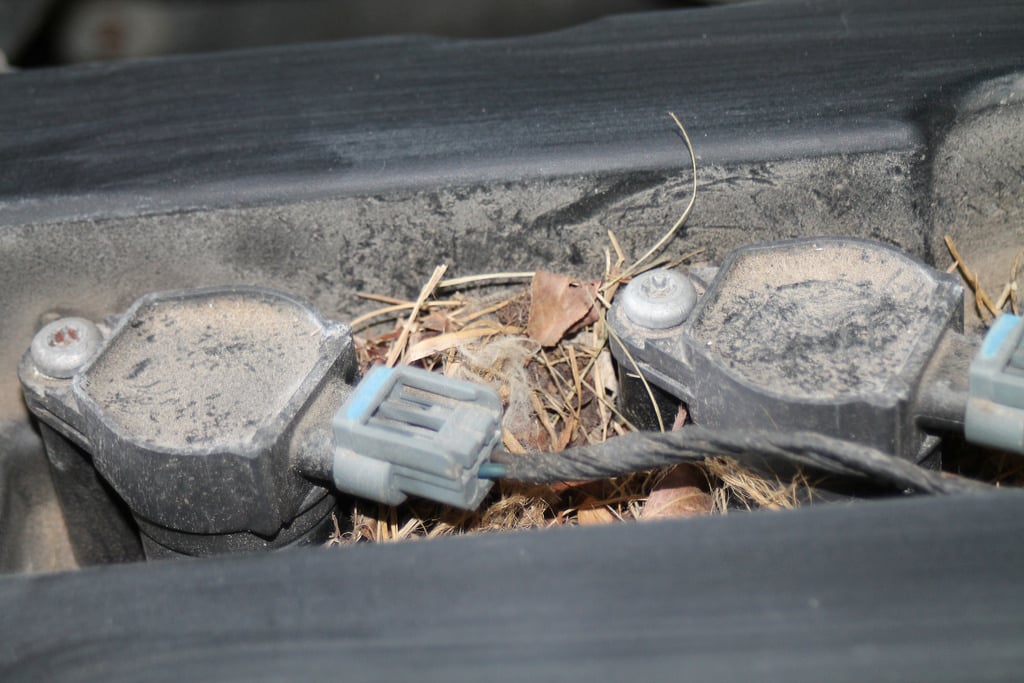
At the beginning of this month we published an article with ten tips to get your classic ready for winter storage. We want to follow that up with an article on how to stop rats, mice and other vermin from turning your classic car or truck into their winter nesting grounds.
A classic car or truck stored away for the winter provides the perfect nesting grounds for critters of all types. Can you blame them? It’s a perfect place to hide from predators and avoid the cold and brutal winter weather.
While storing your classic in a garage is a great option, four-legged furry rodents are experts at finding a way in. If precautionary measures are overlooked and you do get small visitors in your engine bay or interior, they can cause some real damage. By spring time, you could be left with a literal rat-rod.
With these persistent creatures trying to burrow their way in, here are some steps you can take to let them know there is no vacancy.
- Remove every crumb of food from your garage. Do not store pet food or any other tasty morsels unless you’d like to attract every rodent in the neighborhood. Store pet food inside all year round.
- Sprinkle poison around the outside of your classic car. d-Con is a trusted brand in rodent control. This is one of the best ways of keep pests away. Unfortunately, it is also very dangerous to your family pets. Make sure your cat, dog or any other family pet not have access to your garage.
- Set traps to catch or kill them. Mice will often climb a tire to reach the engine compartment. Place a trap on top of each tire. Setting bait can sometimes be seen as counter-intuitive. Bait will attract the animal to the location so maybe use this only if you are finding droppings or notice they have gained access. Traps are also something you want to keep away from your family pets.
- Rodents despise mothballs. This inexpensive solution has been used to combat pests for decades. The unpleasant odor could deter just about anything. If you place them in the interior of your classic car or truck, a few laps around the block with the windows down get rid of any mothball odor come springtime.
- Use other unpleasant smelling items. Mothballs aren’t the only item in the stink arena. Bounce fabric softeners have also been reported to turn away rodents. This option might be the way to go for your interior. Experts also recommend using peppermint oil, powdered fox urine, used cat litter, sulfur, Pine-Sol or red pepper. We suggest not using them all or you might not be able to get near your car ever again. Certainly, don’t put fox urine or used cat litter inside your classic.
- Protect your wires. For some reason, rodents really like the taste of wire coating and have been known to chew completely through the wire harness. Honda has come up with a way to discourage their fetish with Honda Motor Tape. The tape is infused with pepper which stops mice and rats from chewing.
- Stuff the tailpipe. Stuff a rag in the tailpipe to seal off that point of entry into your exhaust. Just don’t forget to remove it come spring or you might wonder why your car won’t run.
- Put your classic on jack stands. If you read our article with tips for storing your classic, then you see we suggest jacking up your car on stands to relieve the stress on your tires and suspension. The tip also helps keep rodents off your vehicle by making your classic harder to reach.
Your best bet is to use a combination of the tips listed above. Other than Honda Motor Tape, they are all very inexpensive solutions. Even the price of the tape can be justified if you compare it to the cost of replacing a wire harness.

